Guilty Pleasures Blu-ray Movie
HomeGuilty Pleasures Blu-ray Movie 
Slipcover in Original PressingSaturn's Core Audio & Video | 1997 | 105 min | Not rated | Mar 28, 2023
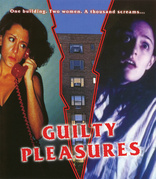
Movie rating
7 | / 10 |
Blu-ray rating
| Users | 0.0 | |
| Reviewer | 3.5 | |
| Overall | 3.5 |
Overview
Guilty Pleasures (1997)
Two beautiful women who live in the same apartment building each have a shocking story to tell. On the first floor lives Silvia Resino, who has three psychotic admirers while on the second floor, RoseMarie Curtis is descending into madness after joining an insane acting school.
Starring: Sasha Graham, Alexandra Paulhiac, Joe Zaso, Ruby Honeycat, Carl MarcheseDirector: Joe Zaso, Joseph F. Parda
| Thriller | Uncertain |
| Mystery | Uncertain |
Specifications
Video
Video codec: MPEG-4 AVC
Video resolution: 1080i
Aspect ratio: 1.30:1
Original aspect ratio: 1.33:1
Audio
English: DTS-HD Master Audio 2.0
Subtitles
English SDH
Discs
Blu-ray Disc
Single disc (1 BD)
Playback
Region A (B, C untested)
Review
Rating summary
| Movie | 2.5 | |
| Video | 3.0 | |
| Audio | 3.5 | |
| Extras | 4.0 | |
| Overall | 3.5 |
Guilty Pleasures Blu-ray Movie Review
Reviewed by Brian Orndorf July 21, 2023Anthology horror comes to the world of shot-on-video entertainment with 1997’s “Guilty Pleasures.” Directors Joe Zaso and Joseph F. Parda bring a pair of short stories to life with “Nocturnal Emissions” and “Method to the Madness,” which lean toward a “Twilight Zone”-style approach to twists and terror, but mostly serve as a way for the helmers to celebrate the work of Dario Argento and deliver some sexploitation. It’s a double feature of sorts, but the material certainly doesn’t earn the run time, with the filmmakers generally ignoring the art of editing as they drag out simple ideas for psychological breakdowns, believing the longer the movie, the better it is. That’s not the case here, as some genuine SOV ambition is slowly buried by punishing overlength.
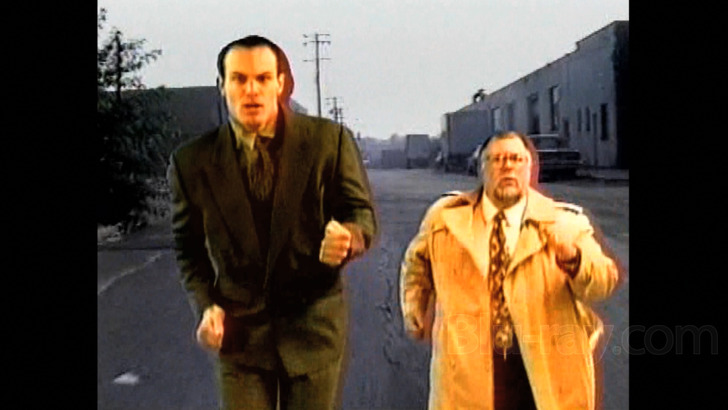
In “Nocturnal Emissions” (39:10), Silvia (Alexandra Paulhiac) is a woman who’s just endured a nasty break-up with her violent ex, Jerome (Eraldo Maglara). She hopes to return to some level of normalcy after dealing with a creep, only to be haunted by obscene phone calls, which arrive at all hours, driving her crazy. When Kim, a fetish model, is brutally murdered, the police visit Silvia, her friend, for some answers, with cop Phil (Joe Zaso) quickly growing obsessed with her. Taking his interest to the dating realm, Phil and Silvia experience a torrid affair, but trouble isn’t far away, with strange behaviors and more phone calls coming for the young woman as she deals with aggressive, arrogant men.
In “Method to the Madness” (66:14), Rosemarie (Sasha Graham) is an aspiring actress who’s moved to New York City from Connecticut to break into the business, dreaming of becoming a major star of the stage. Louise (Liz Haverty), her pushy roommate, urges her to take her craft seriously, inspiring her to visit a method acting class run by Claude (Joseph Marzano), who’s known for his prying, rough ways with students. Submitting to the process, Rosemarie tries to keep up with her fellow students, but she’s haunted by her dreams, repeatedly returning to the mystery of Monica, an enigmatic figure from her past. What begins in the mind reaches the real world, with Rosemarie tormented by box and flower deliveries, with the stress spilling over to her temp job, concerning her boss, Bill (Carl Marchese), who tries to offer some help. As an acting showcase for Claude’s studio nears, Rosemarie reaches the brink of madness, lost as she tries to access dark psychological spaces for her final performance.
“Nocturnal Emissions” is up first, and it’s definitely the weirder of the two endeavors. It’s an Argento homage at times, detailing the wrath of a black-gloved killer who targets naked women, scored to a soundtrack of metal tunes and supported by an agitated visual presence that’s meant to replicate giallo hellraising. This approach is entertaining, and the valentine seems sincere, but Parda gets a little lost in the midsection of the picture, turning focus to a sexual connection between Sylvia and Phil, with the pair turning phone sex into a literal bedroom event. The segment also looks to lampoon foreign films with a subtitled exchange, and the psychic ways of The Amazing Criswell are quoted, with Sylvia taking false visions of the future as gospel. “Nocturnal Emissions” has a final destination, but it’s too easily distracted, ruining potential suspense, and some of Parda’s visual choices are unintentionally (I think) hilarious, including the use of bad chroma keying to stage a simple foot chase.
“Method to the Madness” is the longer segment, with Zaso failing to provide a reason for his indulgence. There’s dramatic potential in Rosemary’s time with Claude, who’s a vicious teacher working to turn his students inside out, even resorting to physical assault to do so. Zaso combines this journey with Rosemarie’s dissolving sense of reality, laboring to build a mystery with Monica, a ghostly figure who initially appears in dreams, soon graduating to visions. “Method to the Madness” goes from the interesting ugliness of Claude’s acting school cult to extended sequences of unreality, repeating rose and music box imagery to a point where it starts to play like an inside joke. Zaso shows no interest in pruning this tale of insanity, letting dull scenes carry on for much too long, destroying whatever pace he’s hoping to build with Rosemarie’s extended journey into emotional submission.
Guilty Pleasures Blu-ray Movie, Video Quality 
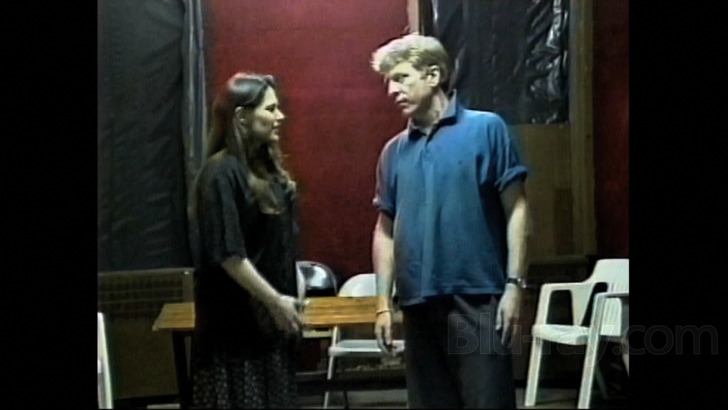
"Guilty Pleasures" is a shot-on-video production, and the AVC encoded image (1.30:1 aspect ratio) presentation retains the usual blurry look for this type of moviemaking. Fine detail isn't available, but some understanding of frame elements is present, entering living spaces, rehearsal rooms, and tours of NYC streets. Colors aren't always stable, but primaries are mildly appreciable, and skin tones are acceptable. A few areas of damage are detected during the viewing experience.
Guilty Pleasures Blu-ray Movie, Audio Quality 
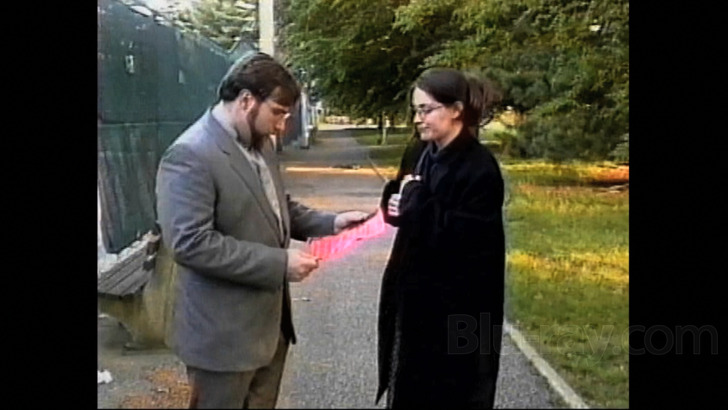
The 2.0 DTS-HD MA provides a simple understanding of dialogue exchanges, capturing thespian intensity with wild dramatic swings, and background noise isn't too intrusive. Scoring remains clear, with a defined synth presence, supporting suspense moods.
Guilty Pleasures Blu-ray Movie, Special Features and Extras 
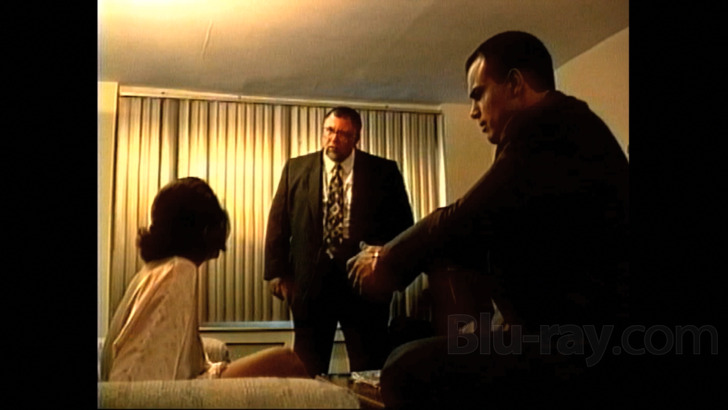
- Commentary features actor/co-director Joe Zaso.
- "A Dangerous Method" (15:09, HD) is a dual interview with actor/co-director Joe Zaso and actress Sasha Graham. Zaso began his filmmaking ambition as a teenager, churning out SOV shorts to learn more about the process, eventually showing more interest in acting, which was challenged by lack of opportunities in college. Graham's life as an actor commenced when she scored a role in a high school musical, learning to love the process after years devouring Broadway productions. Zaso elected to make his own opportunities with low-budget productions, building his resume, while Graham found employment in genre offerings during the 1990s after a move to New York City. Meeting director Joseph F. Parda, Zaso found a partner for his projects, leading the men to the genesis of "Guilty Pleasures," which soon involved the casting of Graham. Responding to the part, Graham fell in love with the acting challenge, tasked with portraying psychological fracture and dual personalities. Zaso used elements of a real- life stalking situation to inspire the writing, bringing some authenticity to the part.
- "Duly Impressed" (4:10, HD) is an interview with actor Carl Marchese, who briefly recalls his hiring process on "Guilty Pleasures," and provides some anecdotes from the shoot. Co-stars are also fondly remembered, and Marchese's excitement to have the SOV film on disc is shared.
- Image Gallery (3:07) collects production stills and BTS snaps.
- And a Trailer (1:32, SD) is included.
Guilty Pleasures Blu-ray Movie, Overall Score and Recommendation 
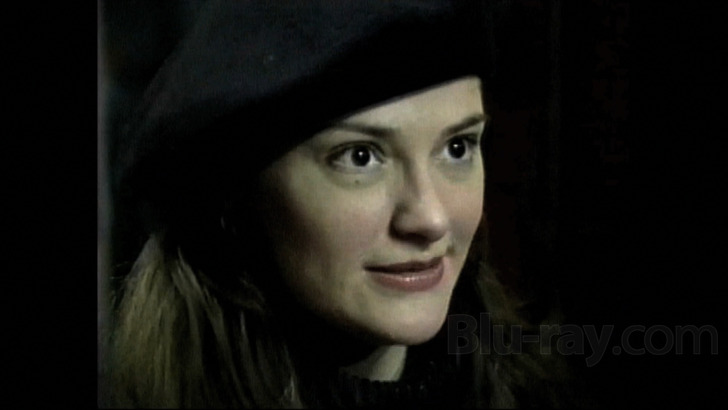
"Guilty Pleasures" has a its moments, with most of them contained to "Nocturnal Emissions," which is the more active of the two segments. There's some directorial flair and pure goofiness, which helps the viewing experience, especially with SOV production limitations. The film peaks too soon, as "Method to the Madness" brings the whole offering to a halt, with the heaviest, least active story saved for last. It's a bizarre creative choice in a project that's filled with puzzling decisions. Entertainment value is limited here, but curiosity might save the viewing experience for some, especially for those looking to see one of the silliest foot chases ever committed to videotape.
Similar titles
Similar titles you might also like

Child in the Night
1990

The Unscarred
2000

Fear in the Night
Dynasty of Fear / Honeymoon of ... Fear
1972

The Fourth Victim
La última señora Anderson
1971

Cold Creek Manor
2003

The Weapon, the Hour, the Motive
1972

Red Heat
1976

Intruders: Season 1
2014

Profile
2018

The Fifth Cord
Giornata nera per l'ariete
1971

Never Take Candy from a Stranger
1960

Side Roads
1988

The Snorkel
1958

At Dawn They Sleep
Slipcover in Original Pressing / Includes Movie Reap of Evil
2000

The Collingswood Story
Slipcase Edition Limited to 1,500
2002

Raw Nerve
Slipcover in Original Pressing
1991

Homicidal
1961

White of the Eye
1987

The Shadowed Mind
1988

Hitcher in the Dark
Paura nel buio
1989